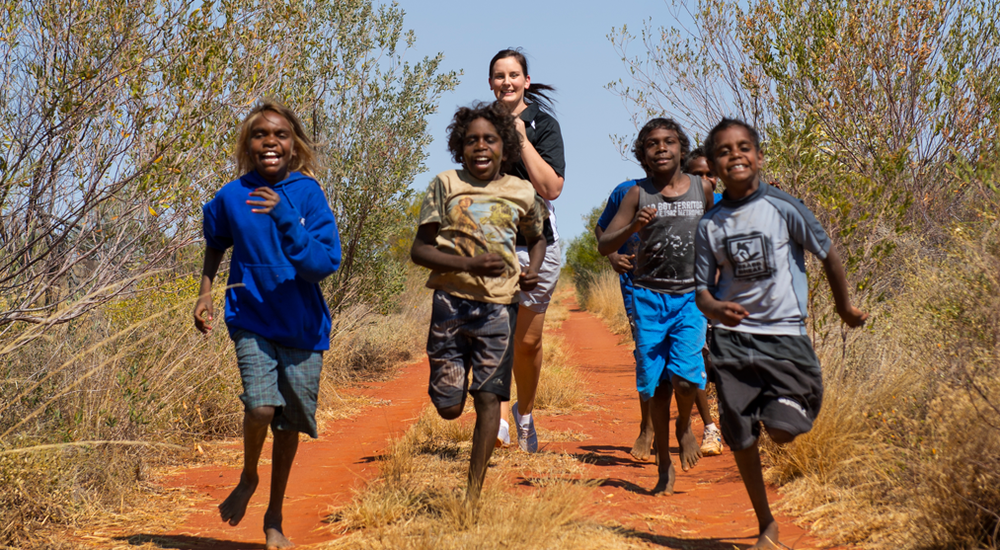
Introduction
If you are thinking about or preparing to live and teach in a remote Northern Territory community, then this guide is for you. It provides practical and useful information to assist you prior to your arrival and is a resource to revisit during your time living and working remotely.
The information in this guide is based on the advice, experiences and learnings of past and present remote Northern Territory educators. For many of these educators the experience of teaching in a remote community has been personally and professionally rewarding and often life changing.
Teachers, cultural groups, communities and schools in the Northern Territory are all different. While it is not within the scope of this guide to cover all aspects of living and teaching remotely, it is hoped that the information presented will provide a strong foundation on which to build upon.
When teaching in a remote school, you have the opportunity to learn more about who you are as a teacher and as an individual, while making a positive and lasting difference to educational outcomes for remote students. We believe that your success as a teacher will in part be measured by your willingness to learn about the community context of where you live, and the culture and language of the local Indigenous people you meet. Developing productive working relationships with members of the community will enhance your capacity to work and live
in a remote context.
If you choose to take up a teaching position in a remote community, it is intended that the practical advice and suggestions within this guide will support your transition and prepare you to settle into your new role as a remote Northern Territory educator.

1. Why are you going to teach in a remote community?
Teaching in a remote community is an experience like no other. Some teachers arrive and feel as though they have always been there; others find it more difficult to settle in.
When you first arrive you may feel like you are on your own. You may be a long way from home. Family, friends and the familiar may be far away. You may be going to a place where you don’t know anyone. Getting there may be logistically challenging. The weather may be different. The languages spoken in the community may not be familiar.
- What image do you have of yourself as a teacher and as a person?
- How well do you know yourself and your culture?
- How much awareness and acceptance of cultural differences do you think you have
- How much experience do you have interacting with people for whom English is an additional language or dialect, and whose world views may differ from your own?
- What is your knowledge of Indigenous Australia?
- What are your experiences with Indigenous people?
- What stereotypes might you hold?
- How willing are you to work with and learn from Indigenous people?
- How might you adjust to living in a remote location without your usual routines and support networks close by?
- How flexible and open to change are you?
By taking time to think about these questions, you will learn more about yourself, your attitudes and your behaviours so as to become a positive and contributing part of the school and community environment.
“Come with an open mind and remain that way. Preconceived notions of community life, or thinking you know how things are because of what you’ve
read or heard can limit your ability to listen to what people are saying, or understand the context of situations.”
Remote educator, Northern Territory

1.1 Before you arrive
The more practical details you know about where you are going, how you will get there and what you may find when you arrive, the better equipped you will be. Below is a checklist of things to consider before you arrive.
What to find out about
- Community-specific information
- Permit requirements
- Postal address c/- school
- Weather
- Access to community
- Local services e.g. mail/ food/health/fuel types
- Telecommunications e.g.mobile phone and internet
- Housing
- Recreational activities
- Entitlements e.g. travel, accommodation, relocation
- Childcare options in the community
- Local dress code
- Furniture and white goods – what is there, what to bring, what is available to purchase in the community
- Vaccinations
- Alcohol permits and restrictions
- Pets – yes or no
What to pack
- Basic kitchen utensils
- Linen and towels – sheets, blankets, pillows
- Medicines
- Identification documents
- General household items – depending on need
- Climatically and culturally appropriate clothing
- Hobbies and entertainment
Professional preparation
- Northern Territory Department of Education website and professional development resources
- School information packs – contact the school
- Class – numbers, ages
- School email account
- Assistant teacher classroom support
- Literacy and numeracy approaches/programs within the school
Bringing personal items to make your new house a home, will assist you in transitioning to remote community living.
“Bring some special memorabilia to remind you of home, family and friends, especially photos. These will be good to share with others about who you are and where you come from.”
Remote educator, Northern Territory
Appropriate clothing in remote Northern Territory communities is different from other areas of rural or urban Australia. As a teacher there will be an expectation for you to comply with the community dress code at all times. Seek information before you pack to ensure you bring culturally and climatically appropriate clothing.
Listed below is some general advice applicable for most communities.

- loose-fitting clothes
- Women: long skirts/baggy long pants or knee length shorts and loose tops
- Men: baggy long pants or knee length shorts, T-shirts or sleeved shirts

- tight-fitting clothes
- exposed shoulders, knees, thighs or midriff e.g. short skirts and shorts, singlets with thin straps, tight pants or shorts, two-piece and one-piece swimsuits
- revealing low cut tops
- see-through/transparent clothing
If you are swimming, it is recommended that women wear knee length board shorts and T-shirts that are not see-through when wet. Men should wear board shorts and T-shirts. Public sunbathing is not advised.

1.2 Understanding the remote context and living local
To move beyond the practical and develop a deeper understanding of the context where you will live and teach, it is important to research the community prior to your arrival. Information about history, community members, language/s and culture will assist in building your readiness to live and work in a remote community.
No two communities are the same and once you arrive you will continue to learn more about specific local knowledge and cultural practices from those around you.
Remote communities have much of the essential infrastructure of a small town with most communities having a community store, health clinic, school, arts centre and workshop. The majority of residents will be local Indigenous people with deep connections to the country on which the community is established. The number of non-Indigenous people living and working there will depend on the size and service needs of the community.
Living remotely has its own rhythm, pace and feel. Obligations and responsibilities to people, places and cultural events can influence the day-to-day activities and functioning within the community. At a school you may find that student population varies depending on cultural events and obligations within and beyond the community. Remembering that these events are beyond your control, assists you to be prepared and flexible for change within the classroom.
“Living in a remote community and being surrounded by another culture will actually reveal just as much to you about your own culture as it does to you about the different culture that you will be exposed to.”
Remote educator, Northern Territory

There may be opportunities for you to take an active role and participate in community and cultural events. Attending or participating in local activities such as sport or cultural events can be a fun and relaxing way to meet and get to know community members.
Another way to get to know people is to shop at the community store where you can interact informally with children and their families.
While you come to the community as a teacher, people often want to know who you are as a person. It is important to consider how deeply you want to get involved in community life outside of the school environment. It is acceptable to respectfully set boundaries and establish personal space for yourself outside the school setting.
Seek advice, learn from it, keep a sense of humour and don’t be too hard on yourself.
If you are confused and uncertain about something, don’t be afraid to ask. A simple question such as ‘What is the best way to …?’ will usually be met with generous assistance. Reciprocate by listening and learning. It is okay to make mistakes, particularly when you are new. Seek advice, learn from it, keep a sense of humour and don’t be too hard on yourself.
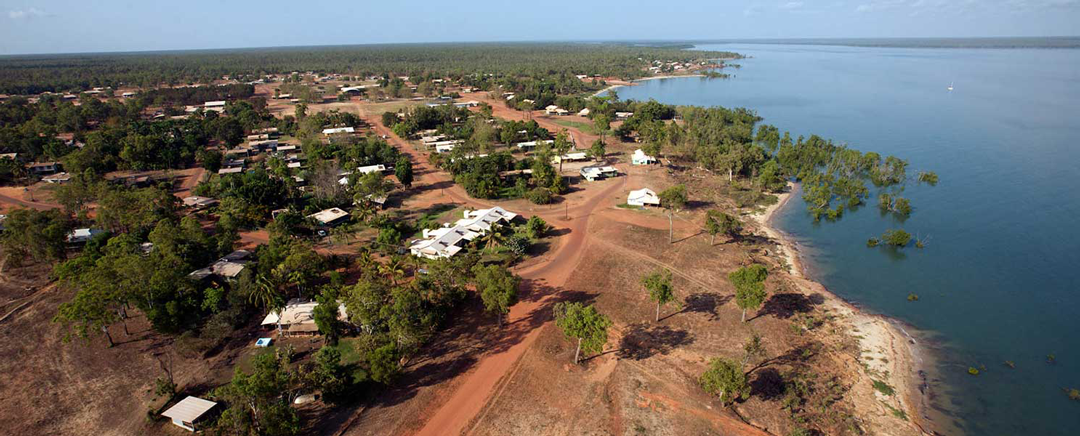
2.Getting in, out and about
The Northern Territory is characterised by vast distances and sparse, small population centres. There are many unsealed roads and single lane roads. Depending on the time of year, weather conditions can change very quickly. There is less traffic, but animals such as camels, buffaloes and kangaroos are often near and on roads in remote locations. They can appear in front of you, apparently from nowhere, especially at night. Some stretches of road are long and shared by road trains more than 50 metres in length. Most accidents are caused by drivers not yet experienced in driving to meet remote road conditions. It is important that when you drive, you plan your trip and let people know when and where you are going, and when you expect to arrive at your destination and return to your community.

"Research the community you are going to so that you have a good understanding of distance, nearest towns, services available and climate."
Remote educator, Northern Territory
Accessibility and travel are dictated by the weather at different times of the year, you will need to consider your travel in and out of the community in advance.
“Be aware that you may not be able to get out of the community easily during the wet season. In my first year at
Ngukurr, the river crossings were up for nine weeks so there was no coming or going by road during that time.”
Remote educator, Northern Territory.
Much of the Northern Territory is Aboriginal land and many of the roads are not open to the public. In order to regulate access to Aboriginal land, Commonwealth and Northern Territory law requires that, subject to exceptions, a written entry permit is required. Unauthorised entry to Aboriginal land in the Northern Territory may result in fines. If the community you are going to is on Aboriginal land you should check with the department or principal as to what permits may apply.
"It’s up to traditional owners to give permission because bininj [Aboriginal people / Kunwinjku language] know the sacred sites where visitors aren’t allowed. Even balanda [European/non-Aboriginal] people who have lived here for a long time should always ask first before wandering about in the bush. They should let traditional owners know before exploring bininj sites. Balanda should ask first because it’s good manners."
Bulliwana et al. 2001
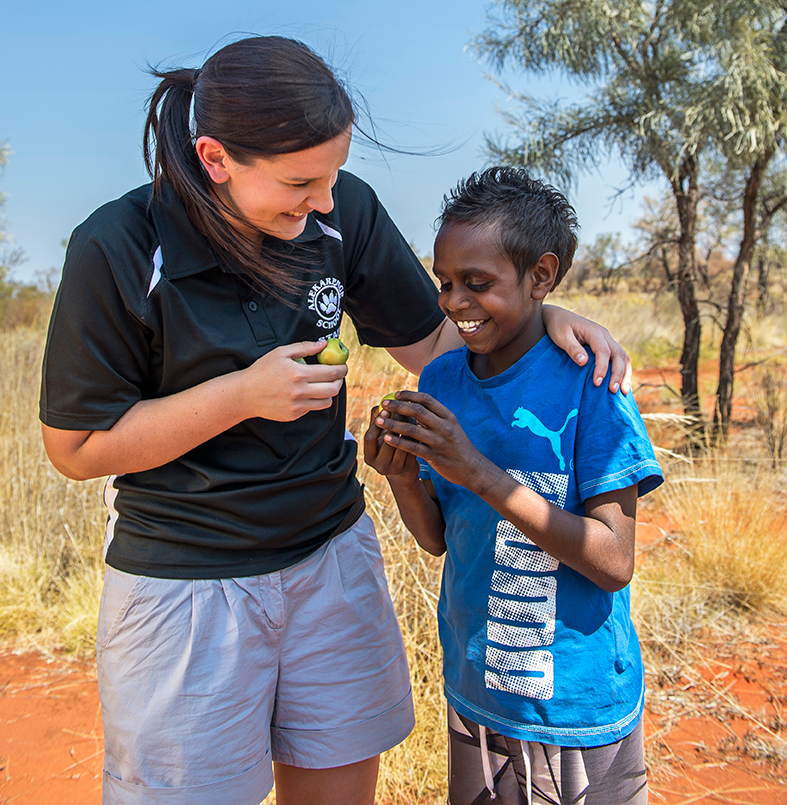
2.1 Cultural competence
Cultural competence is the ability to understand and respect values, attitudes, beliefs, and behaviours that differ across cultures, and to consider and respond appropriately to these differences. It is advised that you seek and follow school and community practices regarding local cultural protocols.
Cultural competence requires you to develop a congruent set of attitudes, language and practices that enable you to work effectively in cross-cultural contexts. Being aware of your ownculture and worldviews is the first step to becoming culturally competent. Making efforts to gain cultural competence is critical
to building positive cross-cultural relationships.
One way to develop cultural competency is to spend time forming relationships with the adults and children within the community. Strong cross-cultural relationships are based on reciprocal trust and respect.
Cultural competence grows through self-awareness, experience, respect, a non-judgmental attitude, empathy, quiet observation, acceptance of confusion, taking time to understand difference and the reasons behind why people do certain things.
The key message here is to appreciate that there are different worldviews that must be respected. The longer you are in a community, the more you will grow to understand what these are and how they impact on the school and classroom.
One way to assist with developing cultural competence is to learn about kinship and skin names. This helps you to understand how Indigenous people are connected to each other and country. It can assist you to understand what those relationships mean in terms of responsibilities and obligations, and the impact they may have on relationships in the classroom and school. Knowledge around kinship can also assist with deepening your understanding of worldviews underpinning particular cultural practices.
Cross-cultural communication is a core component of developing cultural competence. Greetings, eye contact, touching, gestures, facial expression, personal space, wait time between question and answer are all elements of communication which are governed by cultural conventions and worldview.
“As I dug deeper into Indigenous language, society and culture, I gained a deeper appreciation of my background. My experience in the Northern Territory had a profound and transforming impact on my life. Through friendship and respect, learning can be a two-way process; you share your way of life and gain insights into another way of life.”
Remote educator, Northern Territory
Misunderstandings can be compounded by efforts to fix them. Speaking slowly, loudly, or in broken English are often unsuccessful strategies which may offend. Listed below are some strategies to consider:
- work out if the other person is really understanding or being polite and simply agreeing with you
- allow wait time for communication to take place
- use active listening skills to really understand what the person is asking or saying
- rephrase if you think what you are trying to communicate has not been understood
- clarify if you think you are not understanding what someone is trying to say to you
- reflect on your own cultural practices and why you may behave or interpret situations the way you do
- respectfully ask for information about Indigenous cultural practices and worldview so as to deepen your understanding
- explain how your cultural worldview may inform your interpretation of situations – particularly if there is confusion
- demonstrate openness to discussing and sharing worldviews across cultures
- build relationships and trust.
“If you want to have a go at learning some of the local language/s try and find a purpose for using and communicating in this language, for example learning greetings, commands and responses, family relationship terms, names for things (especially if going out bush with people). Find someone who will slow down their speaking of words for you and help you to pronounce words properly and correct you on your pronunciation in order to help you get it right. First you will need to be able to hear the different sounds of the language and then you can learn how to pronounce those different sounds in order to get it right. Don’t be afraid to make mistakes or be put off by people laughing at you, it often means they are really happy that you are trying and just that it sounds funny, especially if you have accidently said something that meant something else.”
Remote educator, Northern Territory
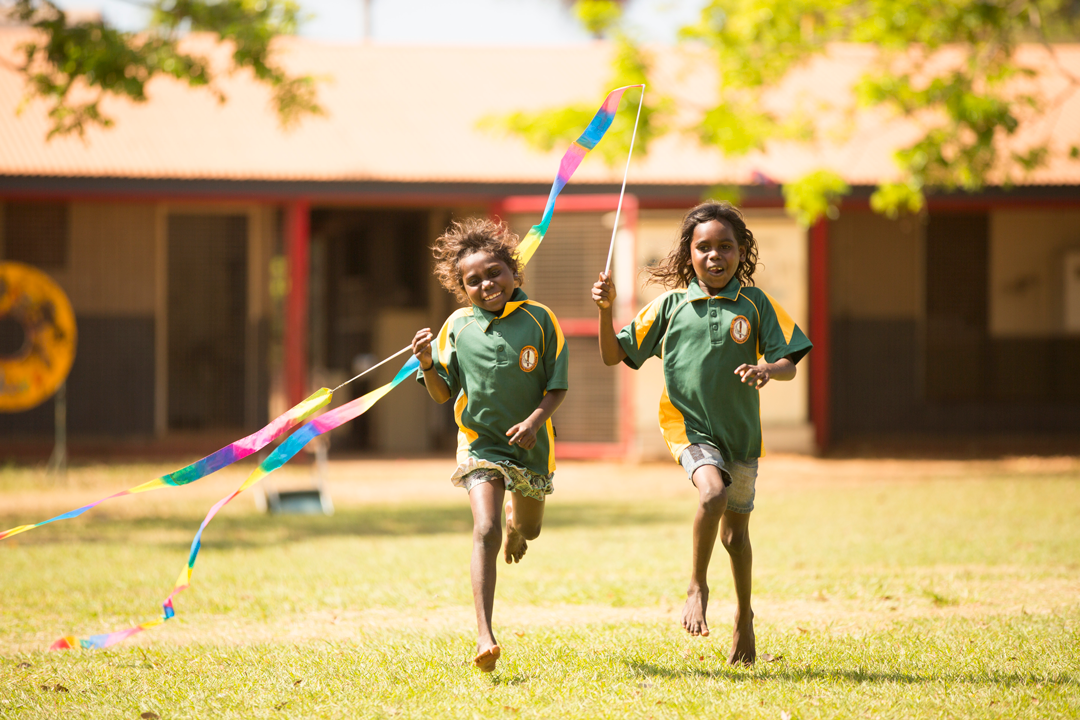
2.2 Health and wellbeing
When living and working in a remote crosscultural context, it is really important to look after your health and wellbeing.
Work-Life Balance
Living in a remote community may mean that your work and the people you work with become a major part of your day-to-day life. Here are some possible steps you can take to maintain your work-life balance:
- phone family and friends regularly
- deliberately talk about things other than work
- encourage family and friends to visit
- create opportunities for time-out and personal space
- undertake study and join professional associations; it’s a great way to develop and keep your knowledge of teaching practices current
- seek the company of others outside of the workplace
- create or join in social occasions in the community
- keep a diary – reading back over it will help you see your learning journey
- take regular trips out of the community
- maintain or create some interests that give you a break from work.
Cultural Shock
When you first arrive, you may experience a degree of culture shock. Culture shock refers to the feelings of confusion, uncertainty and frustration that you experience when you come into contact with a new culture. It can affects individuals differently and varies according to life experiences.
Symptoms may include:
- being constantly tired or irritable, uncharacteristically unreasonable and short fused
- being unable to concentrate for any length of time or unable to do simple things
- withdrawal
- being overly concerned that people are talking about you, or taking advantage of you
- feeling isolated or helpless
- sleeping a lot or tiring easily
- longing to be back home
- unduly criticising local customs or ways of being.
Researching culture shock prior to arriving at a community and reading about others’ experiences, provides a wealth of insight into this area. Once you arrive at the community, there will be a range of resources you can access to support your health and wellbeing such as, the department’s Human Resource Services, the local community clinic, the school principal, colleagues, mentors and family. Local clinics can provide advice about health services and considerations. Why not drop in, meet the staff and learn more about the services offered. It is a good idea to research recommended vaccinations for the community where you are going and the clinic can assist with this.
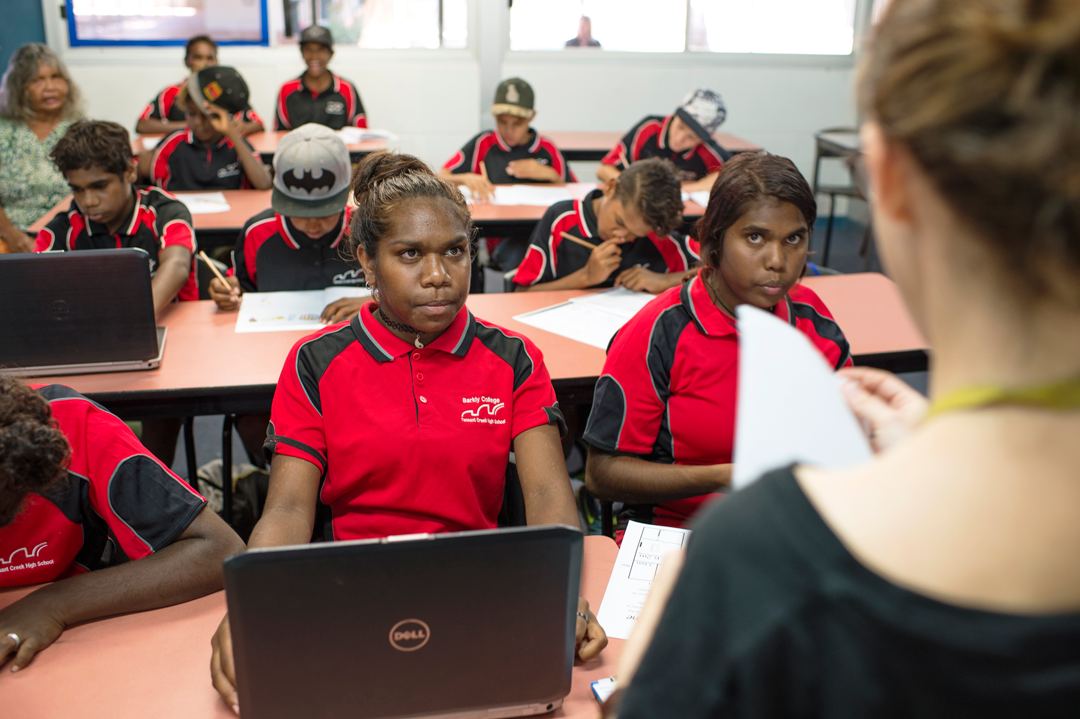
3. On the job - Remote teaching contexts
Government funded schools in the Northern Territory are administratively divided into regions. The head office is located in Darwin with regional offices in Alice Springs, Tennant Creek, Katherine, Palmerston and Nhulunbuy. Department support staff are located in the regional offices to assist and support you in your role. You may be working with Indigenous people from the local community who undertake a range of roles in the school. Some may be principals, senior teachers or classroom teachers. The majority may be assistant teachers, whose primary role is to team teach alongside classroom teachers. Other staff may be ancillary and include school bus drivers, office staff, canteen staff, cleaners and janitors. Larger schools may have specialist staff including home liaison officers, cultural advisors and attendance officers. Local people who work in the school can provide strong links between you as a classroom teacher, the students, their immediate and extended family and other community members. Indigenous school staff and students will have a diversity of linguistic and cultural backgrounds. There is no ‘one size fits all’ description. Indigenous staff bring a wealth of knowledge to the school and teaching context, and may offer great support to you within the school environment.
“Remote teaching is a field of education all on its own, and the most successful bush teachers are those who consider themselves learners as much as teachers.”
Remote educator, Northern Territory

3.1 The students
Classrooms in remote communities are places where a range of different cultures, languages and educational experiences combine. Students may speak:
- one or more Indigenous language
- Kriol
- Aboriginal English
- Standard Australian English.
English is likely to be a second (third, fourth or fifth) language. Local languages are predominately used in the playground, children’s homes and around the community. English as an Additional Language or Dialect (EAL/D) pedagogies, methodologies and strategies support students to engage with the curriculum and improve learning outcomes. EAL/D and other professional development opportunities are available to you through the department, regional offices, the school and your colleagues.
“Find out what has gone on before – in the school/in the classroom – and build on that. High expectations accompany high achievement.”
Remote educator, Northern Territory.

Students may use either an Indigenous or English name at school. Spelling and pronouncing Indigenous names correctly is important. You may have difficulty at first and make mistakes. People will respect your attempts to get them right. Depending on kinship relationships with others, Indigenous people may not look at each other, or you, directly in the eye. In the classroom, students may not exhibit the listening behaviours you expect. They may look down or away when you are working with them one on one. This does not necessarily mean they are not listening and as you get to know the students, and learn from assistant teachers, you will develop a better understanding of body language cues in the classroom. Some students may have a conductive hearing loss caused by otitis media, a middle ear infection. Symptoms, severity, frequency and duration of the condition can vary from mild discomfort to severe pain and mild to serious loss of hearing. This may impact on student learning and engagement. If you have any concerns, seek advice at the school level and through educational hearing specialists within the department. To build your knowledge around the students and high impact remote teaching, reach out and extend your professional networks within the school and the department’s regional and central offices.
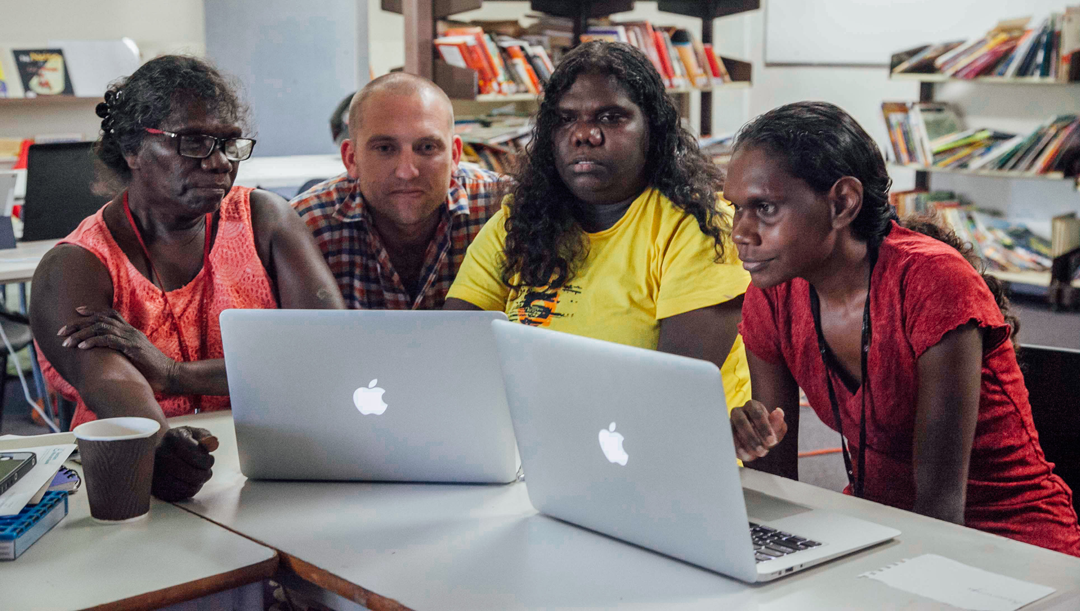
3.2 Working with an assistant teacher – a team effort
Assistant teachers are a paraprofessional workforce who work to the Assistant Teacher Professional Standards, a set of professional standards which use the same domains as the Australian Institute for Teaching and School Leadership (AITSL) Australian Professional Standards for Teachers. Some will have completed or be undertaking formal study in education.
“Working well in an Indigenous community school means working respectfully. Think outside your culture and be open to teaching, learning and working both ways.”
Remote educator, Northern Territory.
The relationships you develop with assistant teachers have the potential to help you live, learn and love working in a remote community. Assistant teachers will have knowledge of the students, their families and the community and can help you understand what is happening if a particular child’s behaviour, attention or motivation changes.
The assistant teacher who works with you in the classroom is the other half of the teaching team. Support, encourage and promote their role as a team teacher and you and the students will benefit. When working with assistant teachers, keep in mind these variables:
- family and cultural status in the community
- family, cultural, and community obligations and commitments
- existing family relationships with students and staff in the classroom and within the school
- English may be a second or third language
- prior schooling experiences may vary
- previous teaching knowledge, skills and experience
- years of formal training.
Developing strong relationships with an assistant teacher will take time, effort and energy. It is important that you develop shared understandings around teaching and learning as this relationship is a powerful model for the students you both teach. Use inclusive language when referring to the teaching team and assistant teachers. Instead of ‘my’ class or students, use ‘our’. Instead of ‘my’ assistant teacher, use collegial language or the person’s name.
It will take time to become an effective teaching team. You will know you are being effective when each member of the team has these characteristics:
- learn together, plan together, teach and assess together
- share teaching, administrative and other tasks in appropriate ways
- function as both teacher learner and learner teacher
- help each other in ways that ensure long-term growth not just short-term goals
- take responsibility for the learning of the children in their care
- have high expectations for themselves and their teaching partner/s
- teach together in ways that promote the independence of each team member (Graham 1999).

3.3 Approaches to pedagogy – finding common ground
Indigenous children continue to learn in and through their own language/s and culture. They may need to develop the ability to learn in nonIndigenous formal educational settings. It is important to think about how the knowledge, skills and experiences the students bring to school can be valued in the classroom and reflected in the teaching and learning program, including the activities that you do together. The Australian curriculum is used in Northern Territory schools. Most schools also implement literacy and numeracy teaching and learning programs. Some schools deliver a formal bilingual program where children learn to read and write in their first language alongside English. Other schools deliver locally developed Indigenous language and culture programs. It is important that you have high expectations about what each child can do. It is important not to assess their developing literacy or numeracy levels as their failure; rather, work collaboratively with experienced remote teachers and assistant teachers to develop suitable teaching methods, interesting programs and engaging activities.
“The children will know whether you genuinely believe in them as capable learners and are there to facilitate their learning. Likewise, their parents and the wider community will support you if they know that you are genuine in your fundamental belief in their children.”
Remote educator, Northern Territory.
Create the conditions that make the classroom a place where different ways of doing, being and learning are included and valued. The following are key characteristics:
- Indigenous culture, language and identity are respected and celebrated
- Indigenous and non-Indigenous staff teach, learn and assess together
- real life learning contexts are included in classroom activities
- students feel safe, welcome and valued
- low risk high expectation learning environments are fostered
- teaching is explicit and scaffolded
- learning is a partnership
- activities move from spoken to written, big picture to detail, familiar to unfamiliar, concrete to abstract
- print and image rich environments are created
- learning moves from whole group, to small group, to individual
- learning intentions and success criteria are clearly articulated
- pace, style and direction of learning can be negotiated
- cultural worldviews are explicitly explored across the curriculum.
In terms of behaviour management in the classroom and playground, it is important to approach this in a culturally sensitive and appropriate way. Actions such as disciplining all students, shouting, singling out and publicly shaming can be particularly distressing for Indigenous children. In conjunction with the assistant teacher, develop classroom management practices and strategies by negotiating a set of classroom norms and behaviours with the students. Be flexible to adapt these as your relationships and understandings develop. Seeking feedback and observing more experienced teaching teams in the classroom are great ways to build on your own classroom strategies, approaches to behaviour management and EAL/D pedagogies.

Final thoughts
The content of this guide provides key information, insights and advice intended to help you better understand remote Northern Territory community and teaching contexts. We suggest that you build on this content prior to and upon your arrival at the school and community. Also, that you continue to seek further information and learn from the people around you to assist in making your experience living and working in a remote community one that will be truly memorable. The contributors to this guide hope that it will support you to adjust to your new environment, consider your own health and wellbeing, develop cultural competence and build strong relationships within the school and community
The Northern Territory Department of Education’s educators and support staff warmly welcome you to our community. We look forward to working with you as we strive to provide quality educational services to all young Territorians and build confident and capable global citizens of the future.
References
- Burrunali, V, Garnarradj, K, Nadjalaburnburn, N, Garnarradj, B, Frawley, J, Namundja, M, Bulliwana, H 2001, Balance: it’s not just words: certificate III in Indigenous education work: a collection of writings by Gunbalanya students 2001, produced by the curriculum and research unit Batchelor Institute of Indigenous Tertiary Education, Batchelor Press, Batchelor, Northern Territory.
- Graham, B. 1999, Working in Teams in Indigenous schools in the Northern Territory, Northern Territory Department of Education, Darwin
